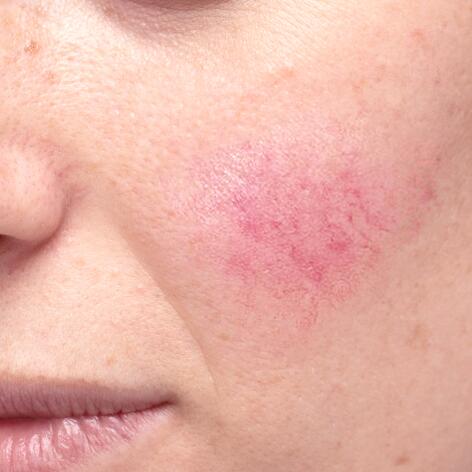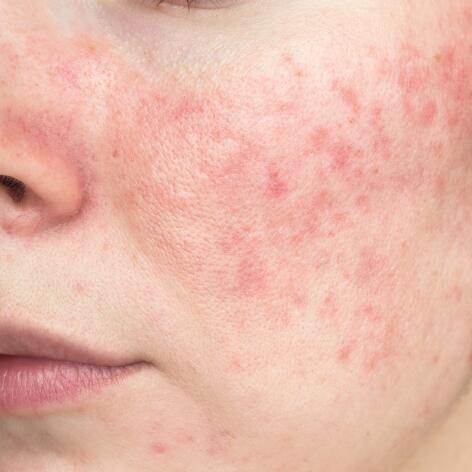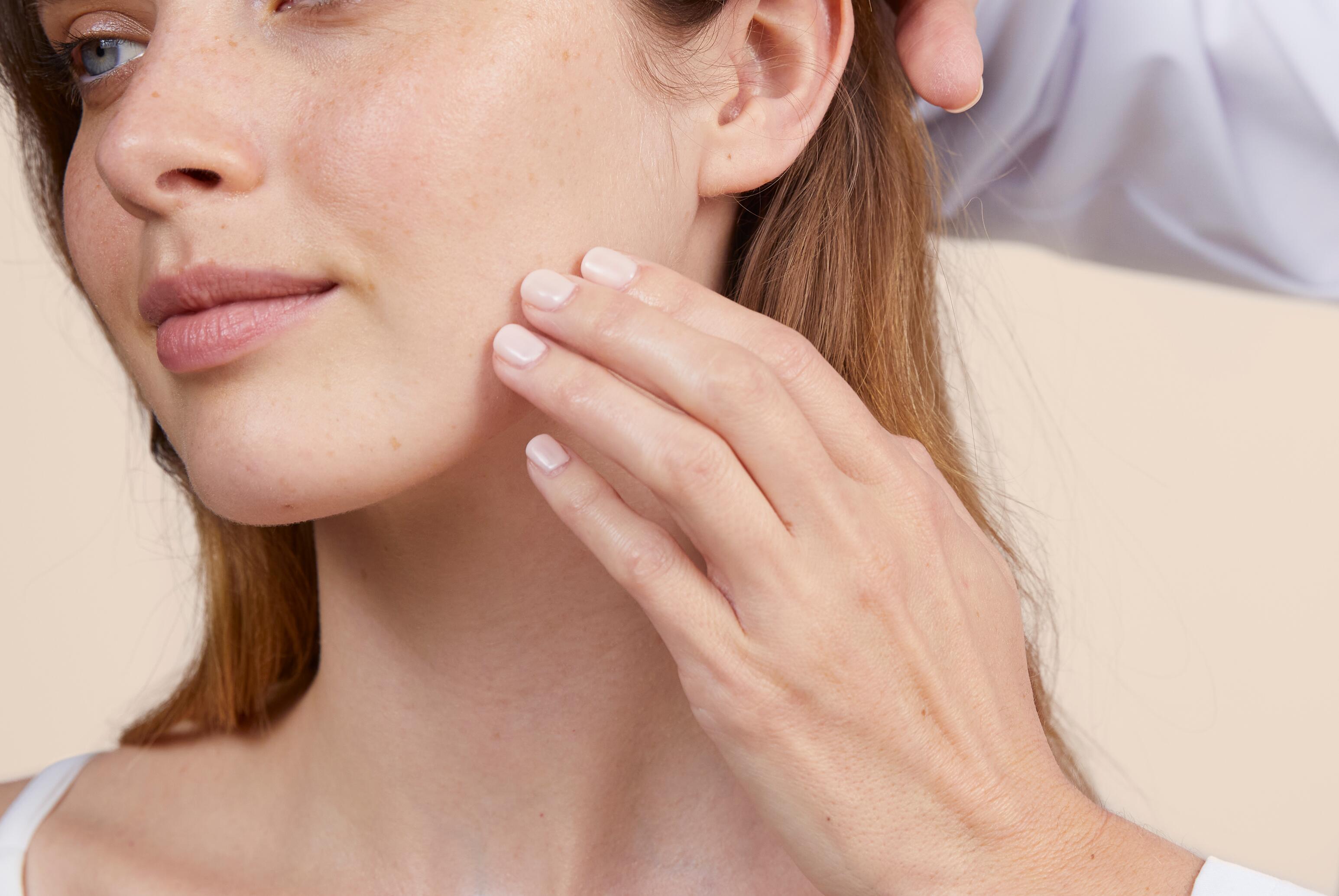Rosacea: from redness to spots
Adolescence is behind you... and yet, have you noticed that your face has become red and spotty, reminiscent of your younger years? These symptoms may be those of papulopustular rosacea, also known as acne rosacea. Let's take a look at this skin condition that mainly affects the middle of the face and causes a lot of discomfort.
What is rosacea?
Behind the lovely name of rosacea lies a skin condition that affects many people to varying degrees. This can range from diffuse redness, to the appearance of fine blood vessels on the face, to flare-ups of small white spots. In all cases, this redness becomes permanent. People with rosacea are, therefore, often embarrassed when going about their daily lives, as the redness is often concentrated on the nose, cheeks and chin.


When spots add to the redness
Once known as “ acne rosacea ”, papulopustular rosacea is a very specific form of rosacea. Like the other types of rosacea (erythrosis and couperose skin), it is characterised by redness concentrated in the centre of the face. In addition, there are inflammatory lesions such as papules or pustules. These lesions take the form of small white spots that can come and go on the face in an unpredictable way. They are often accompanied by burning and stinging sensations on the skin. Ouch!
A few words from our expert
Often wrongly associated with poor health practices, rosacea is in fact a multifactorial condition. It mainly affects hypersensitive and vasoreactive skin, i.e. skin whose blood vessels dilate very easily. For example, these skin types are subject to flushing, sudden “ hot flushes ” that make you “ blush like a tomato ”. When the dilation of the blood vessels fails to pass, the redness remains permanent, and rosacea takes place. If you suffer from the papulopustular form, small spots also appear, the result of spontaneous inflammation, or infection caused by microbial proliferation.
What causes redness and spots?
If you have rosacea, your skin is sensitive to many external and internal factors. It can, therefore, react quickly when faced with certain situations. What’s the solution? Identify the triggers to better prevent new redness and rosacea flare-ups:
- Cosmetics: some ingredients in cosmetic products can irritate your skin
- Food: hot or spicy food, hot or alcoholic drinks can cause strong reactions on the skin on your face
- Exercise: intense physical effort will make your cheeks turn red
- Climate: sudden changes in temperature (especially from cold to hot), wind or sun can make your skin more fragile

ROSACEA REDNESS AND SPOTS
How do I soothe them?
Living with rosacea every day is not easy but there are solutions to combat the redness and spots, which are not always easy to deal with. Here are some practical tips to make you feel more comfortable:
- Relieve your skin with anti-redness products containing the necessary active ingredients to calm uncomfortable sensations and preserve the balance of the skin microbiome
- Protect your face with cosmetic products suitable for sensitive skin prone to redness, protecting it from external aggressors while reducing skin reactivity.
- Use gentle, non-irritating methods, apply products with your fingertips and use thermal spring water to cleanse your skin.
- Choose the right make-up, using products such as a green corrector stick and a foundation that suits your skin, which will minimise the redness and spots, and therefore boost your confidence!
OUR SOLUTIONS FOR SKIN WITH REDNESS
Eau Thermale Avène skincare products designed for skin that overreacts
NEWSLETTER
We’re always here for your skin!
All our tips for taking care of your skin day to day.

Which skin care routine should you adopt?
Identify what it really needs with the help of our experts and discover the most suitable skin care routine for you.
